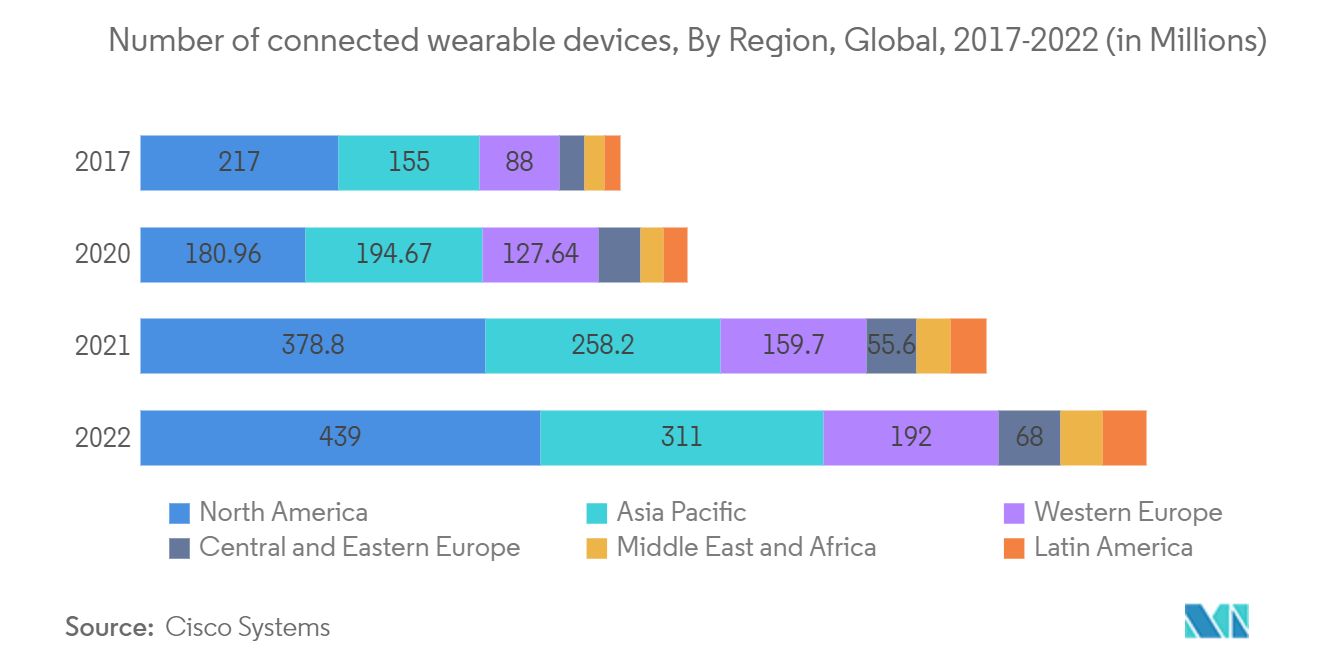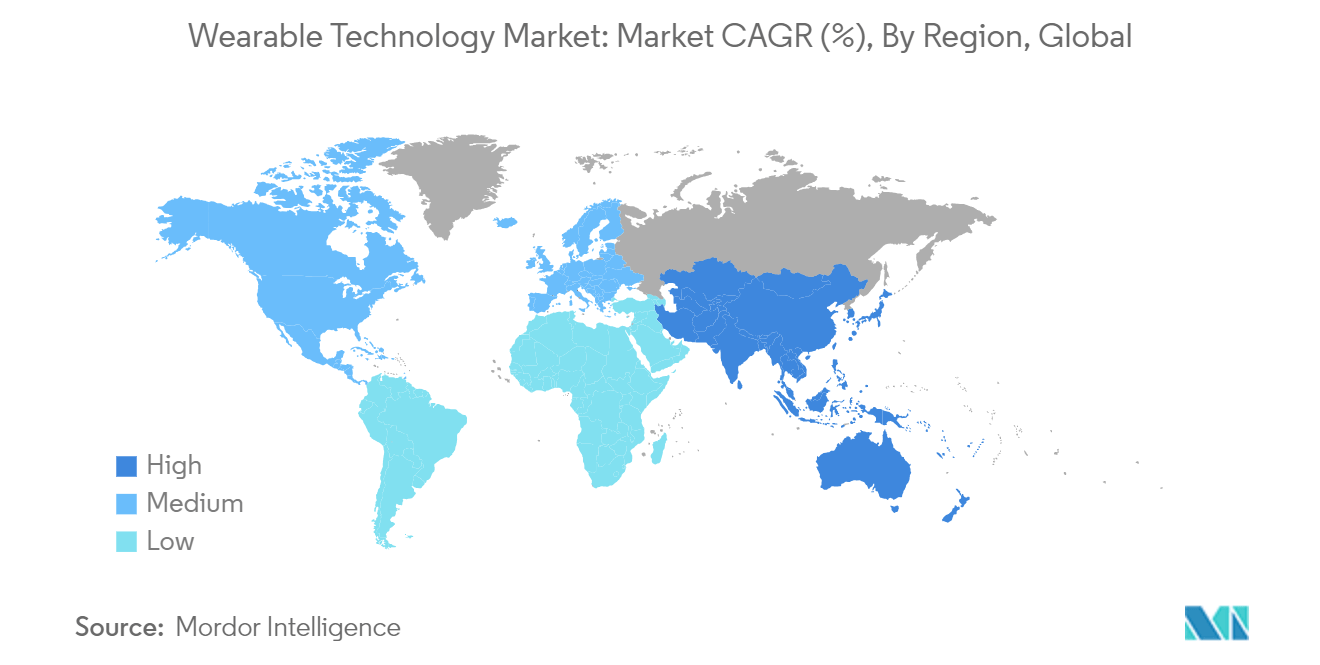Market Trends of Wearable Technology Industry
Head-Mounted Display is Expected to Witness Significant Growth
- Over the forecast period, head-mounted display devices are expected to grow significantly. Additionally, developments in augmented reality (AR) and virtual reality (VR) are becoming increasingly popular in the healthcare industry. In order to aid surgical training and operations, medical professionals use VR technology and VR headsets. This aids them in lowering the possibility of surgical mishaps.
- Owing to augmented, virtual, and mixed reality, digital projections are overlaid with real-life objects, providing contextual information and allowing users to manipulate their surroundings visually. While these technologies are possible through smartphones, tablets, and a host of other mediums, head-mounted displays (HMDs) have become more popular.
- Immersive HMDs are primarily used to experience virtual reality (VR) and augmented reality (AR). Mainstream usage by consumers has been limited due to cost, availability, ergonomics, unfashionable design, and other factors. The primary driver for AR HMDs is enterprise usage, where they are used internally as hands-free tools for business process improvement and training.
- Major gaming console producers like Nintendo and Microsoft are leading the charge because they recognize the potential of AR. With the help of AR, players can leave "their world" and play in the actual world. For instance, Human Pac-Man lets players wear goggles and chase each other in real life while looking exactly like the Pac-Man characters. Many players believe that more than holding a mobile device is required for AR gaming. To some extent, console devices can make up for that.
- A survey conducted by Ericsson Consumer Lab on 7,000 people aged 15-69 in Brazil, China, France, Japan, South Korea, the UK, and the US indicated that two out of three participants were interested in immersive AR gaming. Around 32% of the users agreed that AR games would be more interesting if AR technology were combined with physical activity and exercise.

North America is Expected to Hold a Major Share
- North America is known as the hub for all significant technological improvements in the world. With the advent of smart gadgets, the demand is growing for more powerful and sophisticated wearable technologies. The growth in disposable income and the rapid adoption and popularity of enhanced devices are some of the primary drivers in this geographical region. Furthermore, the region has a strong presence of wearable vendors such as Apple, Fitbit, and Garmin, among others, which contributes to the market's growth.
- Numerous sports associations' increasing investments to eliminate the possibility of any preventable injuries to highly paid professional athletes are expected to fuel the region's wearables growth. The Golden State Warriors, for instance, are collaborating with smart clothing company Athos to use these products for injury prevention and player performance. This investment represents only a fraction of the involvement of the United States athletics sector in the smart clothing industry landscape.
- Apart from the United States, the demand for wearables is also increasing in Canada. The country is expected to provide sufficient expenditures and funding for its military programs (including clothing). Bell has various patents in the United States and Canada that lay out a comprehensive vision for how its wearable technology could be used both by individuals looking to monitor ill loved ones and by institutions wanting to track large populations.
- Further, the US wearable tech audience has a gender ratio of 50:50 and numbers around 24.1 million people. More than half of the audience is between the ages of 25 and 44, and more than half of the users are under 45. In addition, 50% of users are from high-income homes and work full-time jobs. Users of wearable technology are mostly motivated by interests in exercise and personal welfare, which is not surprising.

